Fresh off the rack it looks like a hot weather upgrade, but a few spins through the washer and it hangs off your torso like wrinkly, wet cardboard.
Inspired by a reader question by Zak, a Primer subscriber since 2017.
Linen is always described like it was elected summer’s golden child. Airy, cool, soft, works with loafers, sneakers, under a suit, even as a suit. Then you buy a cheap shirt on sale, and after two wears the placket lays like the edges of lasagna noodles, the fabric feels like a loofah, and the whole thing looks like you’ve been using it as a beach towel.
The explanation is simple: linen is not one thing. It’s many things, and some of them are terrible.
1. The fiber itself: long vs. short, wet-spun vs. dry-spun
Linen comes from flax, and mills divide it into the long, glossy stuff called line and the short broken bits called tow. Line is strong, smooth, and ready to be woven into fabric you might actually enjoy touching. Tow is the sad leftovers: splintery, linty, and better suited to stuffing a scarecrow.
Cheap shirts lean hard on tow, which is why yours feels like it belongs in the shop towels bin. Industry definitions make it sound more dignified, but essentially, tow is fabric mulch.
Spinning matters too. Wet spinning long flax gives smooth, fine yarns that glide on the skin. Semi-wet or dry spinning short fibers creates scratchy ropes you could use to tie down a canoe. And that difference doesn’t ever wash out. Premium European mills, who own the reputation for nice linen, still wet-spin long-line flax.
Brands sometimes tout “European linen” which usually means flax grown in Western Europe (France, Belgium, the Netherlands). These regions have the climate and history for producing the world’s best long-line flax. It’s generally a good sign, even without paperwork. Certifications like Masters of Linen or European Flax exist, but they’re rare to see in normal stores Primer links to; think of them as bonus credibility stamps if you happen across them.
Other certs will appear such as OEKO-TEX Standard 100 like on Quince’s linen shirt, but those are different: they confirm the fabric has been tested for harmful chemicals, not that it’s soft or durable. Nice for peace of mind, but unrelated to hand feel.
It’s possible to find 100% linen shirts at budget brands, but for options on the cheaper end, I actually prefer a linen-cotton blend. The cotton takes away some of the scratchiness and stubborn creasing you get with low-grade linen, even if you lose a bit of the airy texture and drape.
So what to look for when shopping? On a tag or product page, “European linen” is worth noting. If you happen to see certifications like Masters of Linen, even better, though unlikely. In person, trust your hands: smooth and silky usually signals long-line, wet-spun fiber, while rough and bristly points to tow, dry-spun.

2. Yarn engineering: count, twist, and ply
Two shirts both say ‘100% linen.’ One feels soft and drapes, the other can almost stand up on its own. That’s twist. Higher twist yarns are wound tighter, so the fabric turns out stiffer and creases into sharp lines. Lower twist yarns feel smoother and fall into relaxed folds, like the darker fabric in the photo.
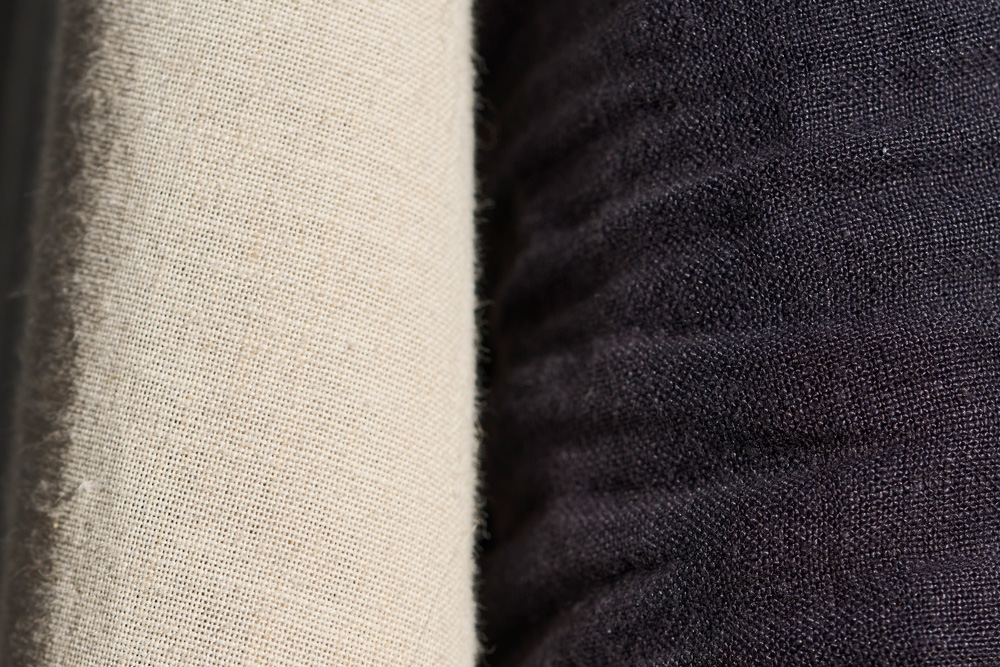
But when cheap shirts use short tow fibers, it’s a different story: the creases set hard and scratchy, less soft rumples and more cardboard bends.
Then there’s ply. Singles tend to torque, which means your shirt spirals like soft-serve. 2-ply balances the yarn, and the fabric hangs the way a shirt should. Textile engineers have documented this in ways that would bore you into an early nap.
So what to look for when shopping? Most brands won’t mention twist, but “2-ply” will sometimes sneak into product copy the way “grass-fed” sneaks onto menus. If you see it, that’s a green light. Otherwise, trust your hands: fabrics that feel firm and papery are usually high twist singles, while those that feel smoother and relax in your grip are more likely lower twist or plied.
3. Weave and construction: why some linen hangs beautifully
Two levers: weave and cover factor. A tight plain weave feels crisp and stiff. A looser plain or a twill feels relaxed and swings better. Fewer interlacings also mean the wrinkles look less like origami disasters. If you want flowy shirts, go loose or twill. If you want collars that stand like little soldiers, go tight. Researchers have entire charts on this.
So what to look for when shopping? Hold the shirt up to light. If the fabric looks dense and blocks most of it, expect crispness. If you can see a bit of daylight between the threads, it’s looser and will drape more.
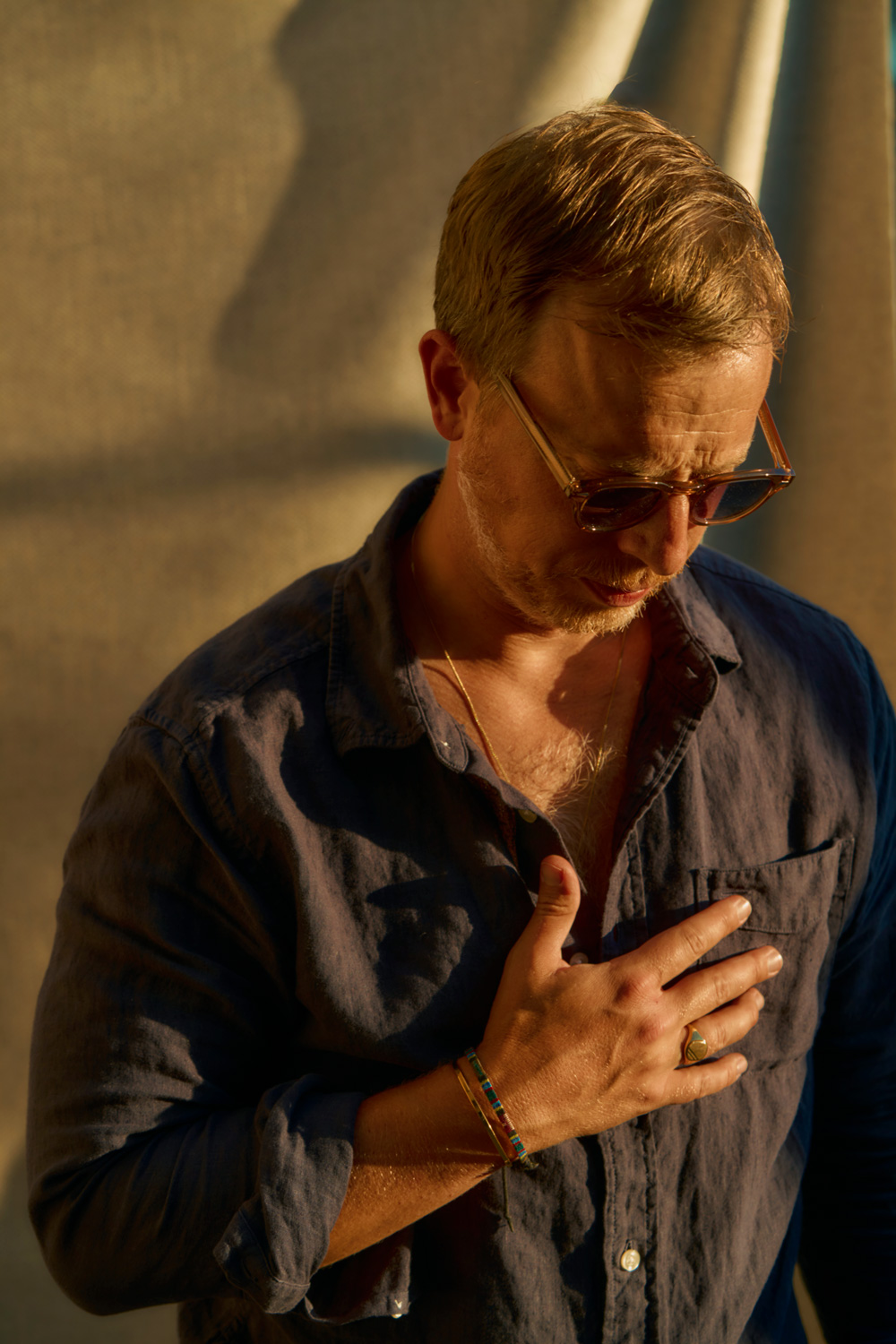
4. Finishing and dyeing: where a lot of the “hand” comes from
Soft linen is not just good flax, it’s good chemistry. Amino-silicone softeners and enzymes strip away the fuzz and slick the surface. Garment dye programs and controlled tumbles give that day-one softness, the way some jeans come pre-faded for people who want the lived-in feel on Day 1.
The downside: anti-crease resins. They help wrinkle recovery but leave fabric stiff, sometimes weak. If your shirt feels like it’s been starched at the factory and stays that way, you’ve probably got resin in the mix or a synthetic-linen blend.
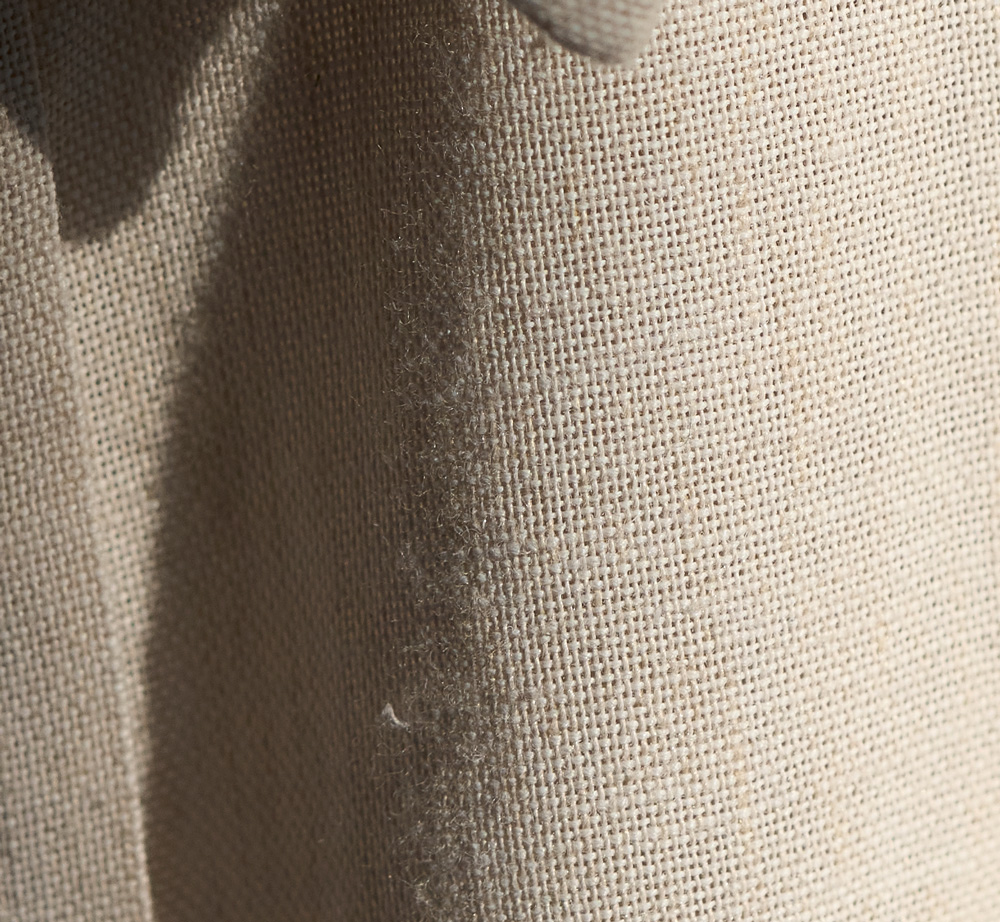
Wrinkle-free linen does have its place. If you’re wearing a shirt for long days at work, you get the breathability and lighter weight of linen with the smoother, more polished surface that wrinkle-free production locks in. What you give up are the big, rolling creases and the drape that make good untreated linen look alive. It’s less relaxed Mediterranean holiday, more office-ready compromise that serves as a lighter alternative to a standard oxford cloth.

So what to look for when shopping? Scan product descriptions for “garment dyed,” “enzyme wash,” or “soft wash.” Those usually mean softer linen from day one. If the tag brags about being “wrinkle resistant,” be prepared for fabric to lack the softness and drape linen is known for.
5. Make quality: why your placket curls
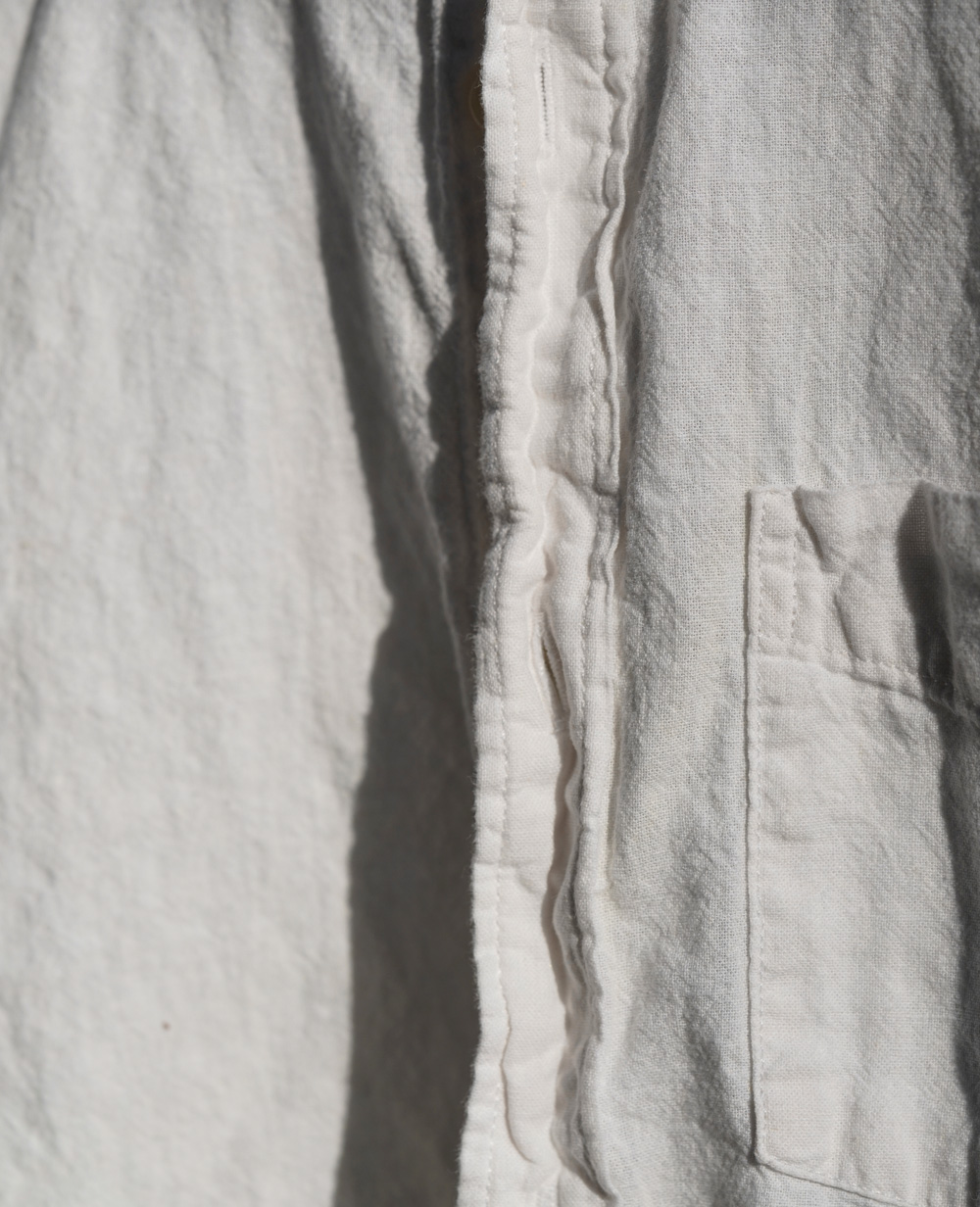
We’ve talked about the difference better yarn and weaving make, but how the shirt is actually put together matters just as much. What makes a nicer shirt different isn’t always obvious from the outside. Even with the same sewn-on placket style, better makers cut on grain, stitch with even tension, and preshrink before sewing, so the placket holds its shape instead of curling or twisting after a few washes.
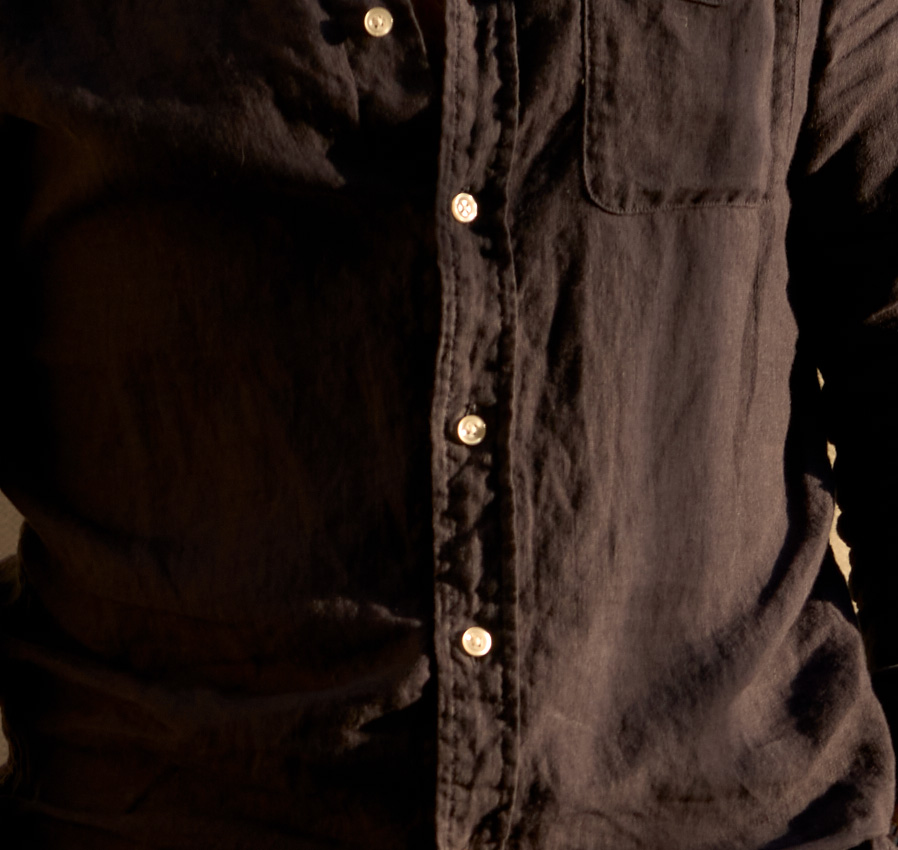
That extra money usually buys the works: long-line fiber, wet-spun yarn, clever yarn engineering, better weave, softer finishing, garment dyeing, and factories that actually check their work. Look for words like wet-spun, 2-ply, garment dyed, or those European certifications. They’re breadcrumbs leading away from shirts that feel like sandpaper.
So what to look for when shopping? Unfortunately (and obviously) more expensive doesn’t automatically equate to quality. Generally, brands that are known to have a decent quality to price ratio like J.Crew can usually be trusted for their 100% linen. Unfortunately below that (Gap, Old Navy, Uniqlo, etc.) and you’re going to run into cheaper linen or blends.
The price jump usually covers things you can sometimes spot in the description: “long line,” “wet-spun,” “2-ply,” or “garment dyed.” Those keywords hint that you’re getting smoother fabric, softer finishing, and shirts that behave better after a wash. The smart move is buying from one of these trusted quality brands when the linen is on sale. For that, make sure to subscribe to Primer to stay up to date on all of our deal coverage.
8. Fixes for a stubborn shirt
A warm iron, steam, and a press cloth will help revive cheap linen, but that becomes routine maintenance. It’s usually more time and cost effective to spend a little more on a shirt that drapes well and needs far less fuss.
www.primermagazine.com (Article Sourced Website)
#Linen #Sucks
